Introduction
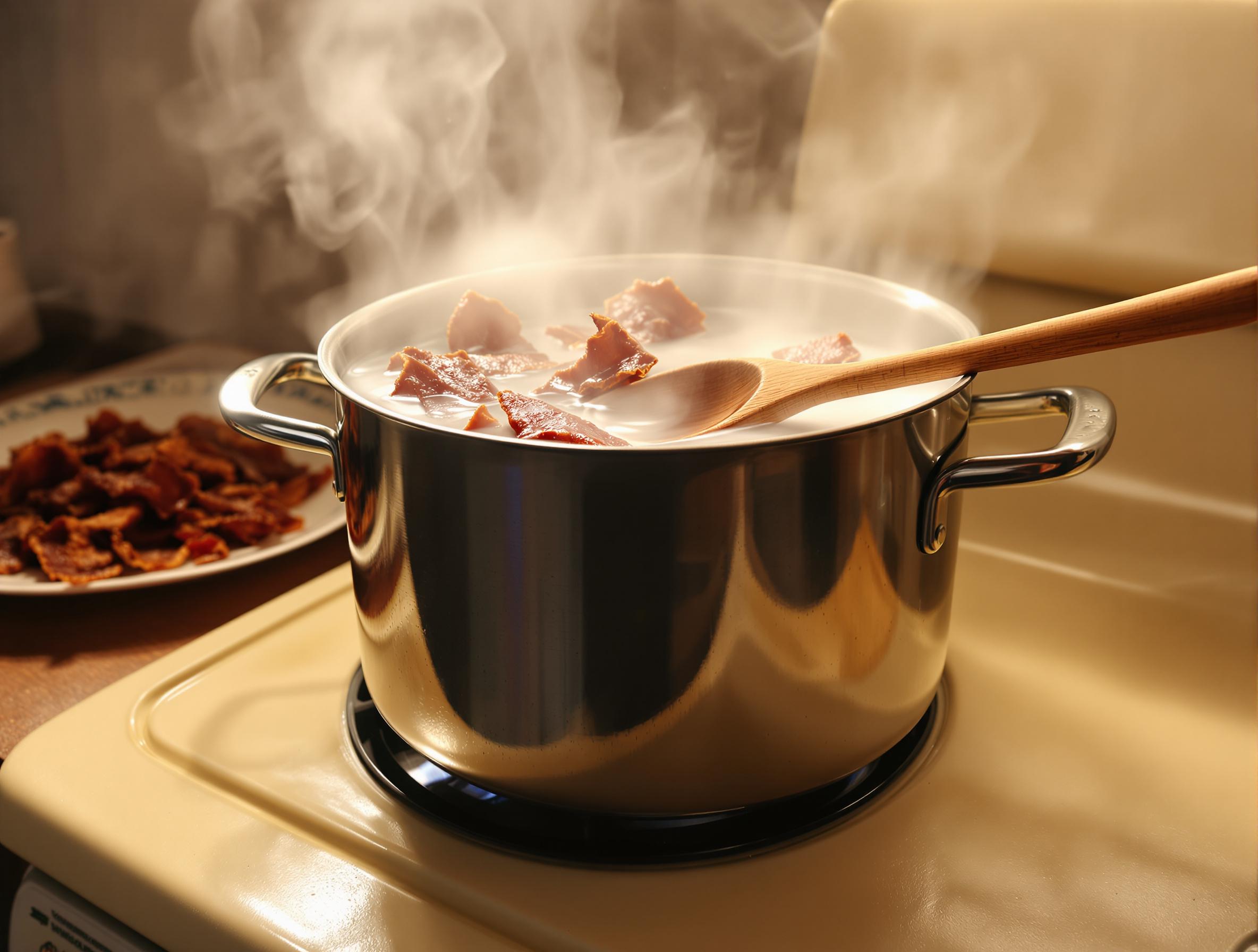
Beef jerky is a beloved snack known for its chewy texture and rich flavor. However, have you ever wondered what happens if you boil beef jerky? This process can significantly alter the jerky’s texture and taste, leading to unique culinary possibilities. Let’s dive into the fascinating world of boiling beef jerky and explore its effects.
Understanding Beef Jerky
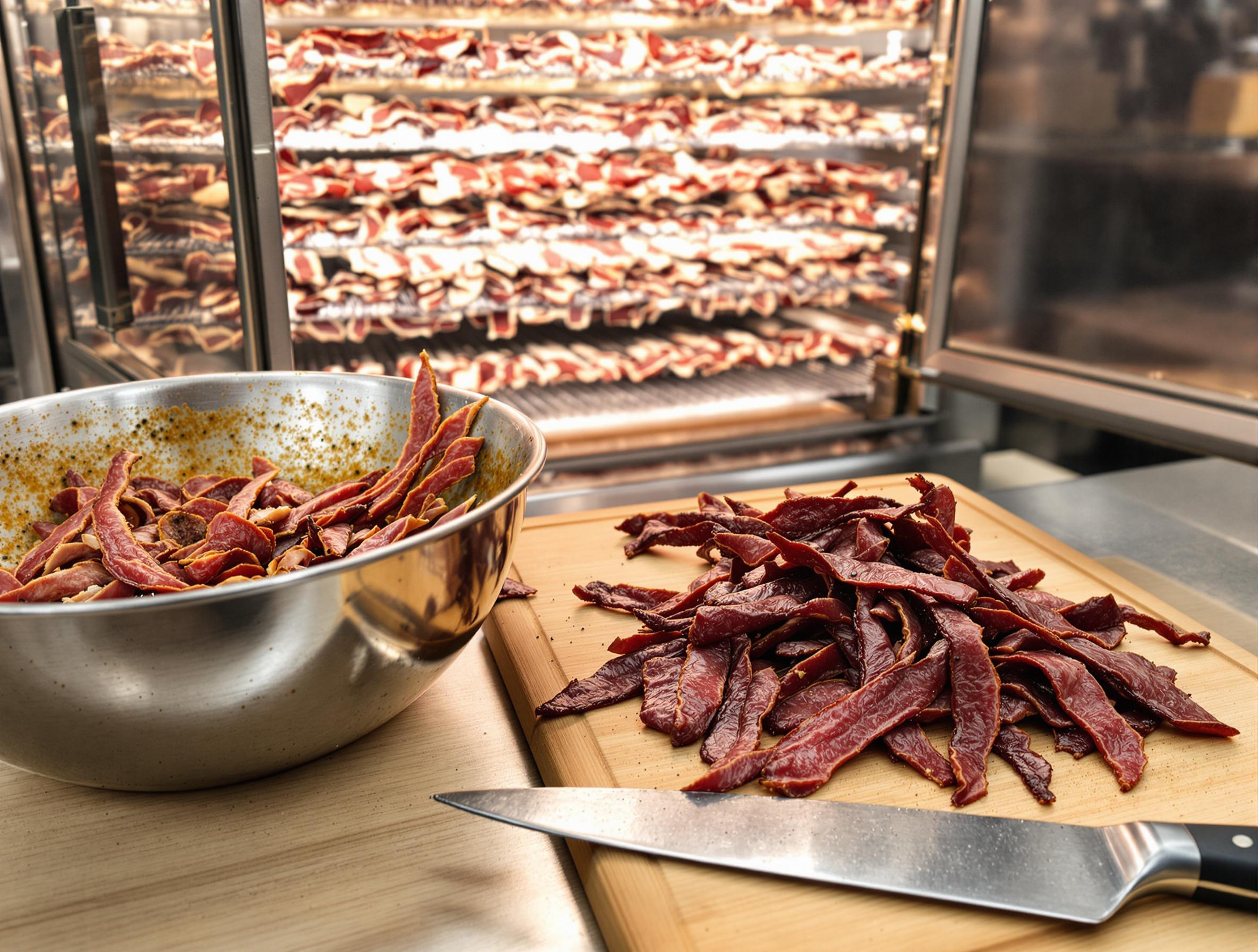
Beef jerky is a type of cured meat made from lean beef that has been trimmed of fat, cut into strips, and dried to prevent spoilage. The drying process typically involves marinating the meat in a seasoned liquid and then dehydrating it, either in an oven or a dehydrator. This process gives beef jerky its characteristic chewy texture and concentrated flavor. For a deeper dive into the intricacies of beef jerky, check out this comprehensive Beef Jerky Rehydration Guide.
The History of Beef Jerky
Beef jerky has a long history that dates back to ancient times. The process of drying meat to preserve it has been used by various cultures around the world. The term “jerky” comes from the Quechua word “ch’arki,” which means “dried, salted meat.” This method of preservation was essential for providing a stable food source during times when refrigeration was not available.
Modern Beef Jerky Production
Today, beef jerky is produced on a large scale using modern techniques and equipment. The process involves selecting high-quality lean beef, slicing it into thin strips, and marinating it in a mixture of spices, salt, and sometimes sugar. The marinated strips are then dried using dehydrators or ovens to remove moisture and create the characteristic chewy texture.
Why Boil Beef Jerky?
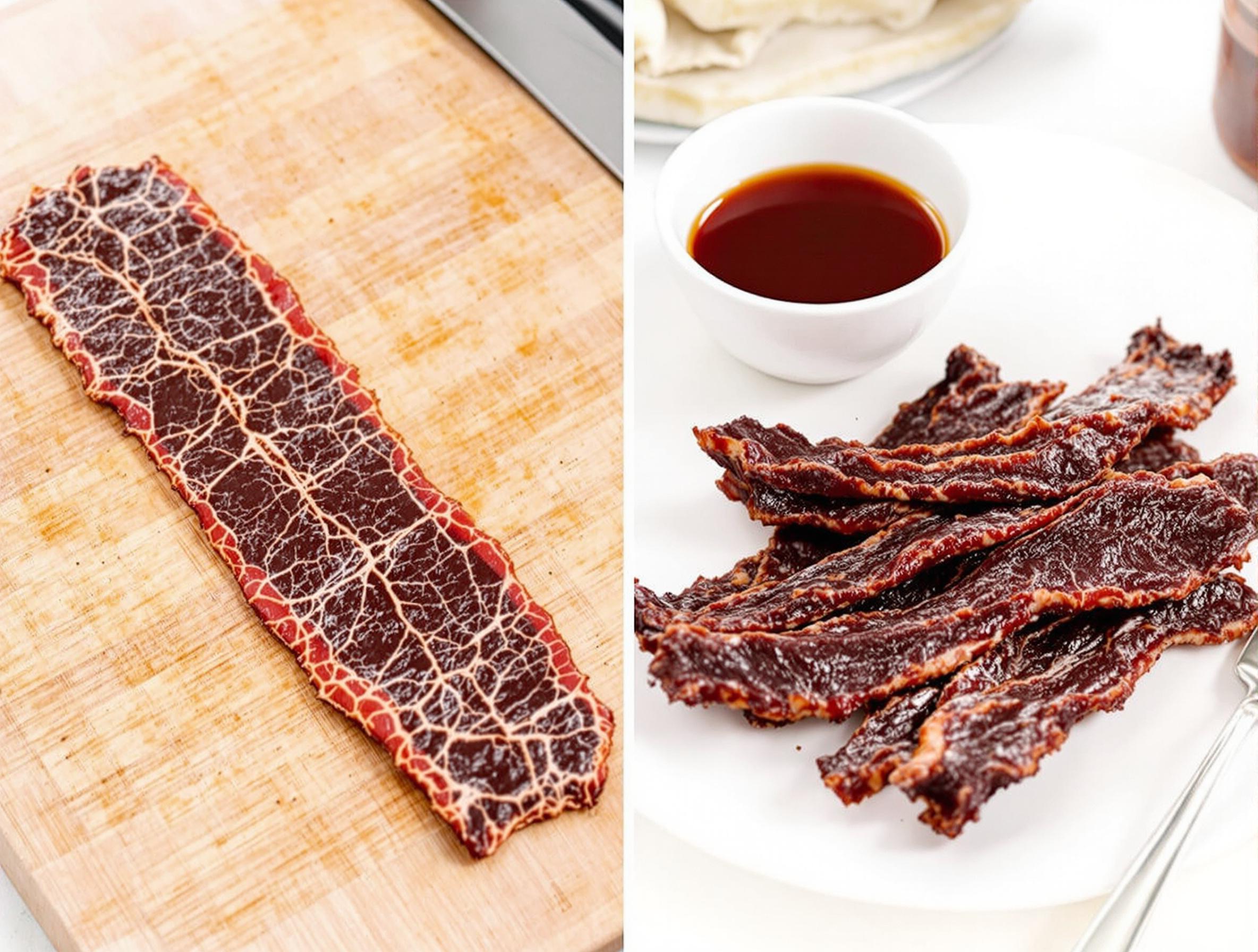
Boiling beef jerky can serve several purposes:
-
Rehydration: Boiling can help rehydrate beef jerky that has become too dry or tough, making it more tender and easier to chew. This is particularly useful if the jerky has been stored for a long time or exposed to air, causing it to lose moisture.
-
Flavor Infusion: By boiling jerky in flavored liquids, such as broth or wine, you can infuse it with new flavors, enhancing its taste profile. This technique can be used to create unique dishes that incorporate the rich, smoky flavor of beef jerky.
-
Cooking Ingredient: Boiled beef jerky can be used as an ingredient in various dishes, adding a unique texture and smoky flavor to soups, stews, and more. It can also be used as a topping for salads or as a protein source in sandwiches.
For more insights into softening techniques, explore these Beef Jerky Softening Techniques.
The Science Behind Boiling Beef Jerky
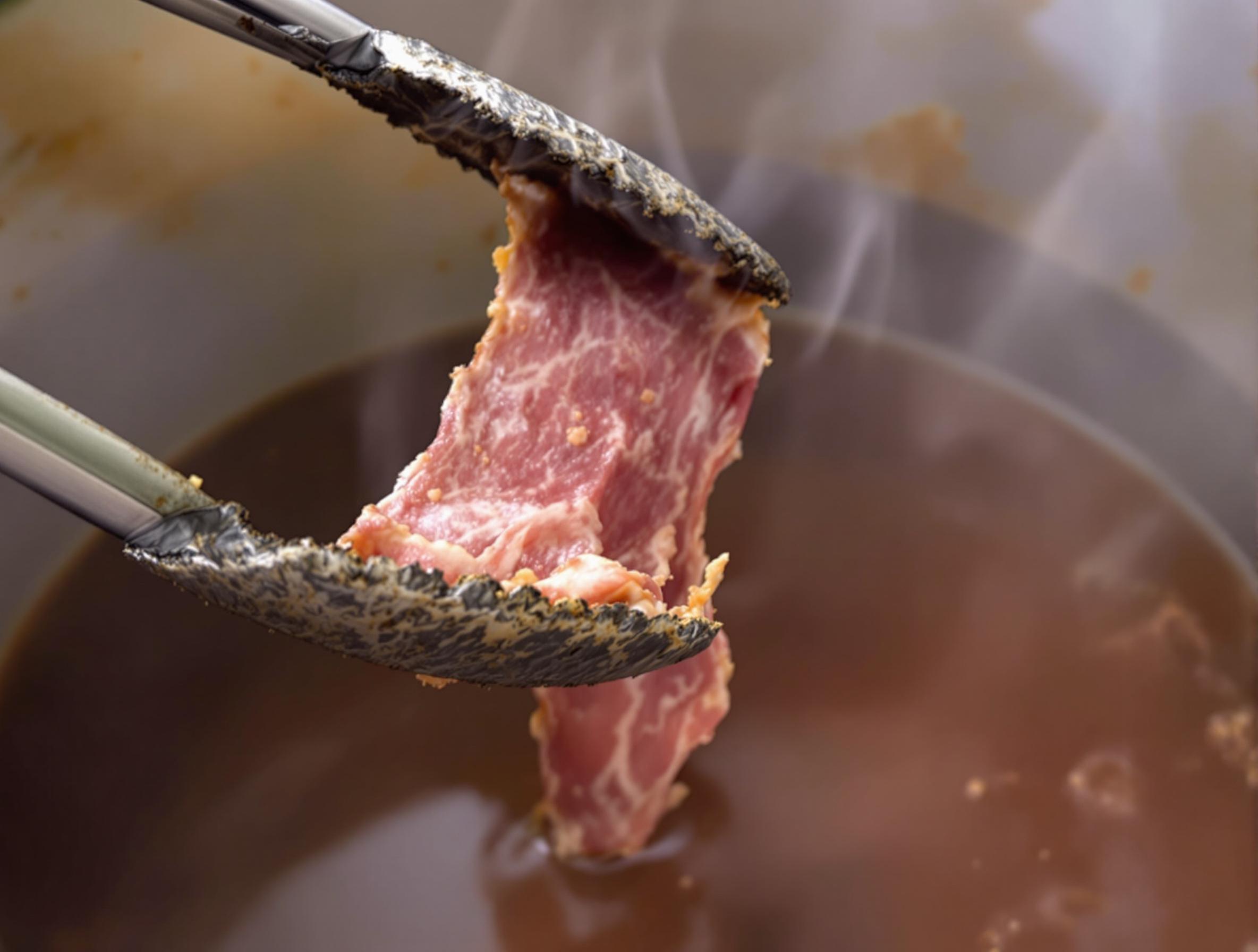
When you boil beef jerky, several chemical and physical changes occur:
-
Texture Changes: The high heat and moisture cause the jerky’s fibers to swell and soften, altering its texture from chewy to tender. This change in texture can make the jerky more palatable, especially for those who find the chewy texture challenging to eat.
-
Flavor Dilution: Boiling can dilute the concentrated flavors of the jerky, especially if done in plain water. However, using flavored liquids can counteract this effect and even enhance the jerky’s flavor profile. For example, boiling jerky in beef broth can intensify its meaty flavor, while using wine can add complexity and depth.
-
Nutrient Loss: Some water-soluble nutrients may leach out of the jerky during boiling, potentially reducing its nutritional value. However, the extent of nutrient loss depends on the duration of boiling and the type of liquid used.
Methods of Boiling Beef Jerky
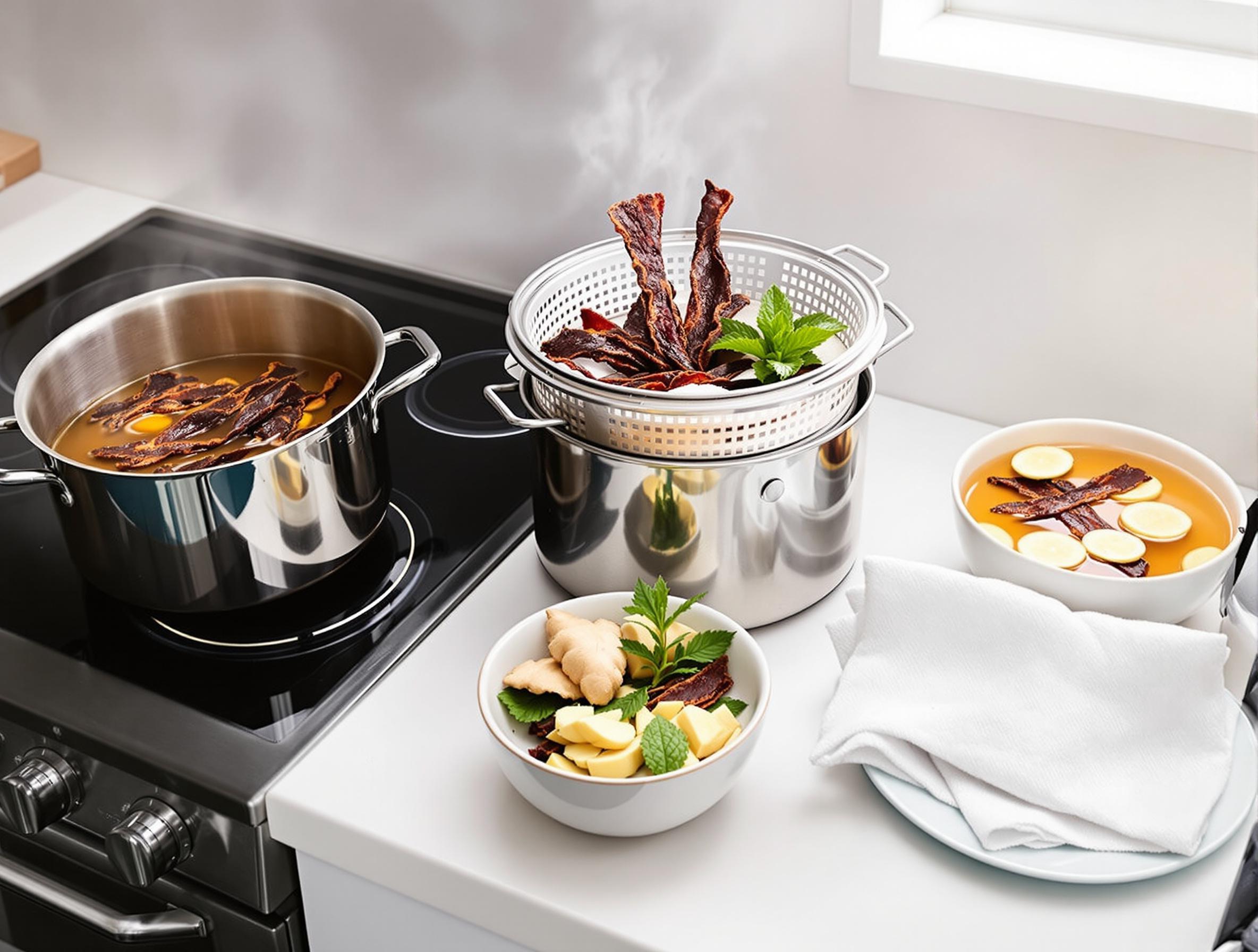
To boil beef jerky effectively, follow these steps:
-
Preparation: Start by selecting the beef jerky you want to boil. You can use store-bought or homemade jerky, depending on your preference. Cut the jerky into smaller pieces if necessary to ensure even boiling.
-
Choosing the Liquid: Choose a liquid that complements the flavor of the beef jerky. Water is a neutral option, but using broth, wine, or beer can add depth and complexity to the jerky’s flavor.
-
Boiling Process: Place the jerky in a pot and cover it with your chosen liquid. Bring the liquid to a boil, then reduce the heat to a simmer. Let the jerky simmer for 10-15 minutes, or until it reaches your desired tenderness.
-
Cooling and Using: Remove the jerky from the liquid and let it cool before using it in your recipe. The boiled jerky can be added to soups, stews, or used as a topping for salads and sandwiches.
Alternatives to Boiling Beef Jerky
If boiling isn’t your preferred method, consider these alternatives for rehydrating or softening beef jerky:
-
Microwaving: Wrap the jerky in damp paper towels and microwave it in short intervals until it reaches the desired texture. This method is quick and convenient but may not infuse the jerky with additional flavors.
-
Steaming: Place the jerky in a steamer basket over boiling water for a few minutes to introduce moisture without over-saturating it. Steaming is a gentle method that preserves the jerky’s flavor while making it more tender.
-
Soaking: Submerge the jerky in a liquid, such as water or broth, and let it soak for 30 minutes to an hour. Soaking is a slow process that allows the jerky to absorb moisture and become more tender over time.
Culinary Uses of Boiled Beef Jerky
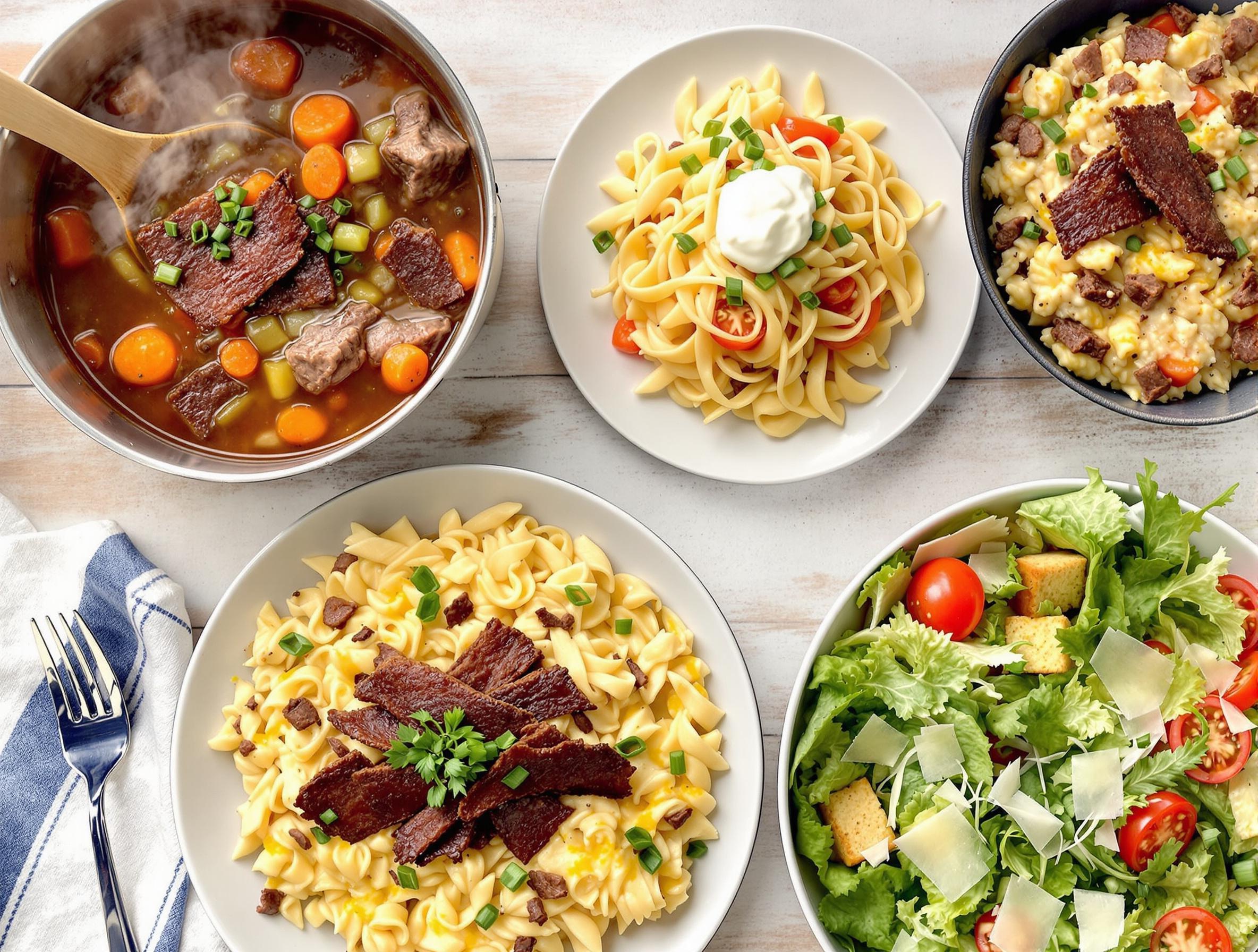
Boiled beef jerky can be a versatile ingredient in various dishes:
-
Soups and Stews: Add boiled jerky to hearty soups or stews for a smoky, meaty flavor. You can explore a delicious Beef Jerky Soup Recipe that incorporates the unique flavors of beef jerky into a hearty dish. The jerky’s rich flavor can enhance the depth of soups and stews, making them more satisfying and comforting.
-
Pasta Dishes: Incorporate boiled jerky into pasta sauces or as a topping for a unique twist. The jerky’s chewy texture and smoky flavor can complement various pasta dishes, from creamy Alfredo to hearty Bolognese.
-
Breakfast Scrambles: Chop up boiled jerky and add it to scrambled eggs or omelets for a protein-packed breakfast. The jerky’s savory flavor can elevate simple breakfast dishes, making them more exciting and satisfying.
-
Salads: Use boiled jerky as a topping for salads to add a protein source and smoky flavor. The jerky’s chewy texture can provide a satisfying contrast to the crispness of fresh vegetables.
Nutritional Considerations
Boiling beef jerky can affect its nutritional profile:
-
Protein Content: The protein in beef jerky remains largely unaffected by boiling, making it a good source of protein even after cooking. Protein is essential for building and repairing tissues in the body, making beef jerky a valuable addition to a balanced diet.
-
Sodium Levels: Beef jerky is often high in sodium, and boiling can help reduce its saltiness, making it more suitable for low-sodium diets. However, the extent of sodium reduction depends on the duration of boiling and the type of liquid used.
-
Calorie Count: Boiling may slightly increase the jerky’s calorie count due to the absorption of liquid, but it remains a relatively low-calorie food. The calorie content of beef jerky depends on the specific recipe and ingredients used in its production.
-
Fat Content: Beef jerky is typically low in fat, as the drying process removes most of the fat from the meat. Boiling does not significantly affect the fat content of beef jerky, making it a lean protein source.
FAQs
-
Can boiling beef jerky make it unsafe to eat?
- Boiling beef jerky is generally safe, but it’s essential to ensure the jerky is fresh and free from mold or off odors before boiling. Boiling can help kill any bacteria present in the jerky, making it safer to consume. However, if the jerky shows signs of spoilage, such as a strange color or odor, it’s best to discard it.
-
How long should you boil beef jerky?
- Boil beef jerky for 10-15 minutes, or until it reaches your desired tenderness. Be careful not to overcook it, as this can make the jerky mushy. The duration of boiling depends on the thickness and dryness of the jerky, as well as the desired texture.
-
What are the best liquids to boil beef jerky in?
- You can boil beef jerky in water, broth, wine, or beer, depending on the flavor profile you want to achieve. Water is a neutral option that rehydrates the jerky without altering its flavor. Broth can enhance the jerky’s meaty flavor, while wine or beer can add complexity and depth.
-
Can you reuse the liquid after boiling beef jerky?
- Yes, the liquid can be reused in soups or stews to infuse them with the jerky’s flavor. However, it may be high in sodium, so use it sparingly. The liquid can also be used as a base for sauces or marinades, adding a rich, smoky flavor to your dishes.
Conclusion
Boiling beef jerky can be a game-changer in the kitchen, offering a unique way to rehydrate and incorporate this beloved snack into various dishes. By understanding the science behind the process and experimenting with different methods and recipes, you can unlock new culinary possibilities with beef jerky. So, next time you find yourself with a stash of overly dry jerky, consider giving boiling a try and discover the delicious results for yourself.
Additional Tips
-
Rehydrating Beef Jerky in Soup: Learn more about rehydrating beef jerky in soup and how it can enhance your culinary creations. Rehydrating beef jerky in soup can add depth and complexity to your dishes, making them more flavorful and satisfying.
-
Other Uses for Beef Jerky: Discover other creative uses for beef jerky beyond just snacking. Beef jerky can be a versatile ingredient in various dishes, from appetizers to main courses. Its rich, smoky flavor can elevate simple dishes, making them more exciting and delicious.
Advanced Techniques for Boiling Beef Jerky
For those looking to take their boiling techniques to the next level, consider these advanced tips:
-
Infusing with Herbs and Spices: Add herbs and spices to the boiling liquid to infuse the beef jerky with additional flavors. Bay leaves, thyme, and garlic are excellent choices that can complement the jerky’s smoky flavor.
-
Slow Cooking: Instead of boiling, try slow cooking the beef jerky in a crockpot or slow cooker. This method allows the jerky to simmer in liquid for an extended period, resulting in a tender and flavorful texture.
-
Pressure Cooking: Use a pressure cooker to boil beef jerky quickly and efficiently. Pressure cooking can significantly reduce the cooking time while preserving the jerky’s flavor and texture.
Experimenting with Flavors
Boiling beef jerky opens up a world of possibilities for experimenting with flavors. Consider these flavor combinations:
-
Asian-Inspired: Boil beef jerky in a mixture of soy sauce, ginger, and garlic for an Asian-inspired flavor profile. The jerky’s smoky flavor can complement the umami-rich soy sauce and the aromatic ginger and garlic.
-
Mediterranean: Boil beef jerky in a mixture of olive oil, lemon juice, and oregano for a Mediterranean-inspired flavor profile. The jerky’s rich flavor can complement the bright, citrusy notes of lemon and the earthy flavor of oregano.
-
Spicy: Boil beef jerky in a mixture of hot sauce, chili powder, and cumin for a spicy flavor profile. The jerky’s smoky flavor can complement the heat of the hot sauce and the warm, earthy notes of chili powder and cumin.
Storing Boiled Beef Jerky
Proper storage is essential for maintaining the quality and safety of boiled beef jerky. Follow these tips:
-
Refrigeration: Store boiled beef jerky in an airtight container in the refrigerator for up to one week. Refrigeration helps preserve the jerky’s texture and flavor while preventing bacterial growth.
-
Freezing: For longer-term storage, freeze boiled beef jerky in an airtight container for up to three months. Freezing can help preserve the jerky’s quality and extend its shelf life.
-
Reheating: Reheat boiled beef jerky in the oven or microwave before serving to enhance its flavor and texture. Reheating can help restore the jerky’s tenderness and make it more enjoyable to eat.
Conclusion
Boiling beef jerky is a versatile and delicious way to incorporate this beloved snack into various dishes. By understanding the science behind the process and experimenting with different methods and flavors, you can unlock new culinary possibilities with beef jerky. Whether you’re looking to rehydrate dry jerky or infuse it with new flavors, boiling is a technique worth exploring. So, next time you find yourself with a stash of overly dry jerky, consider giving boiling a try and discover the delicious results for yourself.